While hubby and I thrill to go pickin’ for antiques in barns, there’s more than a little work involved in dealing with the not-so-nice side of “farm fresh”.
“Farm fresh” really is an oxymoron; for the reality is that these items are typically covered in all sort of “ick” — like bird and animal droppings, spider webs, and other things that make the layer (or two) of good old-fashioned dirt seem heavenly. *wink* Since I’ve just spent the past two days restoring some “farm fresh” finds (and rather spectacular ones at that — antique wooden school desk sets!), I thought it would be a good time to talk about just how to properly clean, care for, and restore antique wooden pieces.
It is important to note that when I say “restore”, I don’t mean “refinishing” these pieces. Like most collectors, we prefer to bring pieces back to life — while maintaining the patina and other signs of their former lives. Whether your antique and vintage furniture and other wooden items are covered in “farm fresh” filth or just need a little clean-up, here’s how you can gently take care of them.
As you can see, these old children’s school desk sets looked like they came out of a barn.
To remove the first layer of “crud”, you’ll want to “power wash” with the lawn hose. Stand a few feet away, and let the water spray away the cobwebs, leaves, dirt, clumps of bird poo, etc. Turn the piece over, so that you can get beneath it. This will remove a lot of the surface dirt, as well as stuff that’s hiding in nooks, crannies, and crevices.
Unfortunately, that’s the easiest part. There’s lots more to do yet. And there’s nothing left to do but do it! *wink*
While the piece is still wet, fill a bucket with warm water, add some Murphy’s Oil Soap, and scrub with a rag. While the manufacturer does not recommend using Murphy’s Oil Soap on unfinished or unsealed wood (and with these old pieces, lots of the original finishes have been stripped or have just plain worn away), we’ve never had any problems. As with anything, test a small area first — especially if you have a painted piece of furniture, or one with decals.
At this point, you’ve probably got a bucket full of mud — and furniture that still isn’t clean. So you’ll need another bucket full of clean warm water and Murphy Oil Soap. Only this time, you’ll want to use one of those cleaning sponges with a non-scratching scrubby-side. (For projects like these, we recycle all the sponges which have been spent cleaning around the house.) Use the sponge to scrub off more stubborn dirt, going with the grain of the wood.
Now, you’ll want to let the pieces dry to be better able to evaluate them. (Plus, your arms will want the rest!)
Once completely dried, we discovered that these desks had been used as tables for painting projects — or at least to hold one of the paint cans, for there was a giant ring of paint and several large splashes of paint too. (Likely lead-based too.) So we had to make a choice and we opted to lightly sand away the offensive paint stains. Then it was one more wash with another bucket of diluted Murphy’s Oil Soap; this time using the soft side of the sponge to go with the wood grain.
After the desks and chairs had completely dried again, we were left with what nearly looked like bone-dry, but spotted, wood that had been left in the desert. Once again, we had to make a choice. While we do adore the charms of worn wood, this was too-worn looking; so we opted to liven it up a bit. But just a bit. While oil can darken or even blacken stained wood, we felt oil was better than wax in this particular case. (With finer pieces, you’ll probably want to use a paste wax. And if you have a lot of different types of antiques you want to treat, Renaissance Wax Polish can be used on lots of other surfaces. And, again, always test in a small, inconspicuous area first.) In the case of these antique school desks, we applied Old English Lemon Oil. Twice. The first coat was rubbed in, left overnight, then another coat was rubbed in the next day. This was the final result:
I think they turned-out quite lovely; even if I do say so myself!
I just love the patina on the one desk with the fancier (older) iron legs — complete with whatever remains of the green stain used and, most charming of all, the old carvings former students had made in the desk top.
And this is how they look in the “back to school” window display at Antiques On Broadway, here in Fargo:
Now let’s talk about taking care of your antique furniture.
Beware the orange oil cleaners, especially for every day use. We can tell you from painful personal experience that those cleaners stripped the finish clear off an antique five-leg table in less than a year. For every day cleaning, use a damp towel with a mild soap — and, with a soft clean cloth, buff dry thoroughly. Wax or oil only when the shine has really left, which is likely once or twice a year.
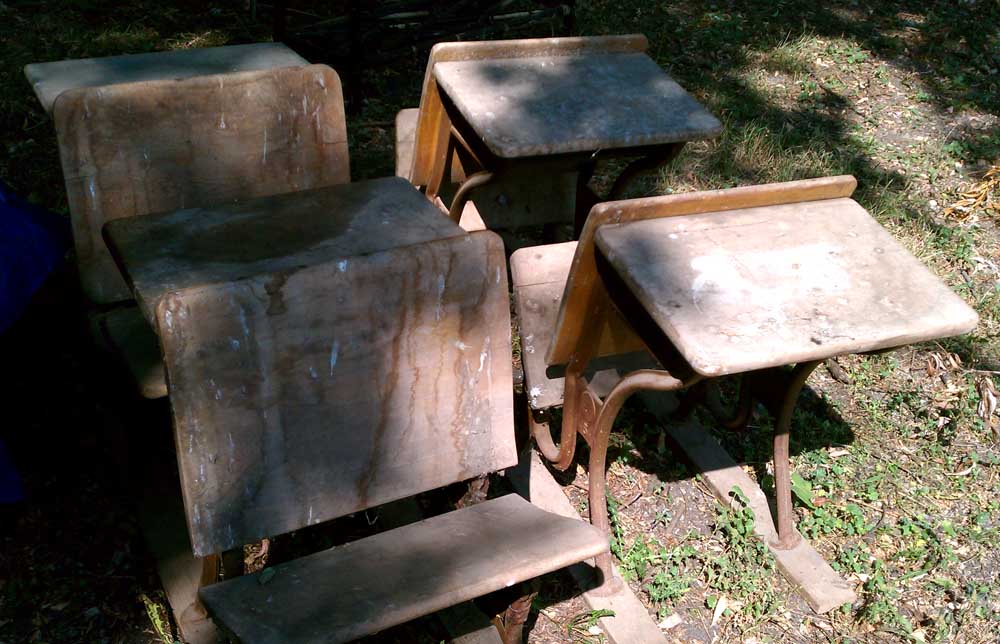
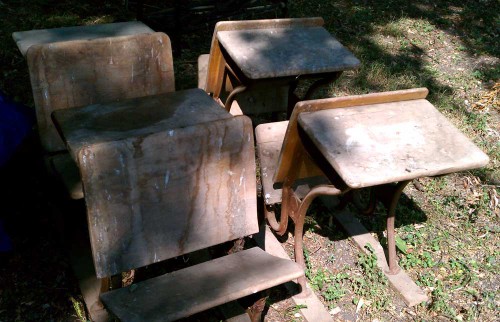
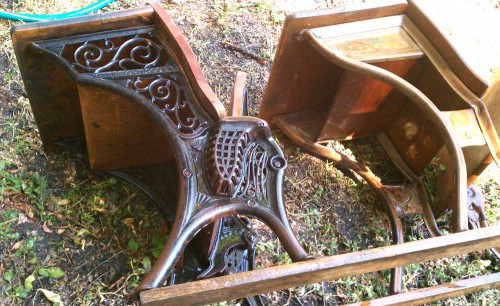
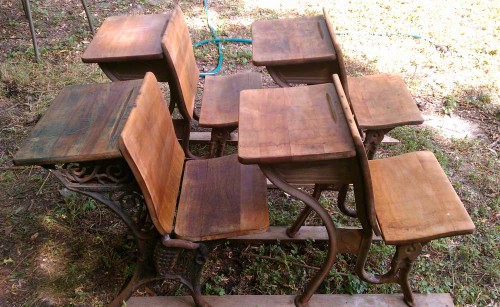
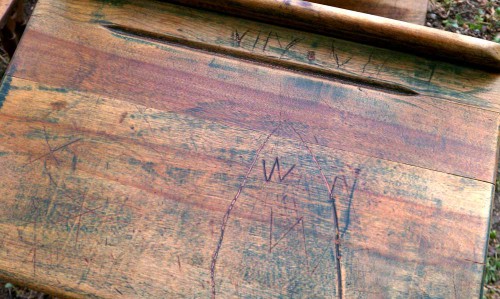
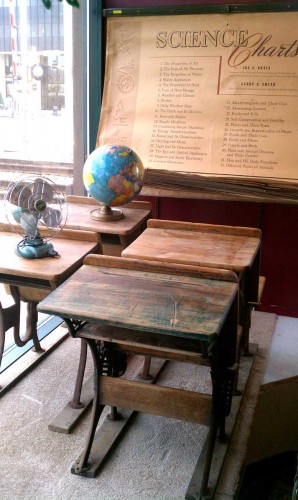
Leave a Reply